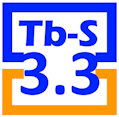Windows keyboard shortcuts
Navigating through the Windows system

Would you believe many Windows users do not even know about this?
The 'magic' Windows key (or Winkey), with the Microsoft Windows logo, is a dedicated operating system key created since the times of Windows 95 (launched in 1995). Some of these very practical and useful keyboard shortcuts exist since then (underlined, below). Obviously, in Windows 10 and Windows 11 there are new concepts and new functionality and their corresponding keyboard shortcuts.
|
Keyboard shortcut |
Action/Description |
|
Winkey |
Pressing this key by itself is the equivalent of clicking the Windows Start button. Same action also as Ctrl + Esc. |
|
Winkey ; or Winkey . |
That is, plus a semicolon or plus a full stop pressed simultaneously. Brings up the Windows emoji picker to insert in any document or message. |
|
Winkey + Tab |
Activates Task View, that is, a 'mosaic' of all opened applications and Windows virtual desktops. This Task View is also a timeline. |
|
Winkey + A |
Activates Action Center for quicker access to a variety of systems settings. |
|
Winkey + C |
Activates Cortana with speech, if activated. |
|
Winkey + D |
Shows desktop, that is, it minimizes all opened applications at once. Pressing this keyboard shortcut again, will bring back all windows. |
|
Winkey + E |
Opens File Explorer. This is the most useful of all. |
|
Winkey + G |
Activates the new Xbox game bar to let you record games or take screenshots. Among other things, the game bar allows you to capture screen activity. |
|
Winkey + I |
Opens Windows 10 or Windows 11 settings. |
|
Winkey + K |
Activates Connect feature to stream to wireless displays and audio devices. |
|
Winkey + L |
Locks a machine. |
|
Winkey + P |
Project a screen. |
|
Winkey + R |
Run a command, for instance "cmd" to open the Windows command line. |
|
Winkey + W |
Opens the amazing and multifunctional Windows Whiteboard. |
|
Winkey + X |
Opens power user features: device manager, network connections, computer management, disk management, the Windows mobility center, etc. |
|
Winkey + Left / Right / Up / Down |
Snaps applications or programs to the side of the screen. Great for translators reviewing side by side an original document vs a translated document. |
|
Winkey + Ctrl + D |
Creates a new virtual desktop. |
|
Winkey + Ctrl + F4 |
Closes a virtual desktop. |
|
Winkey + Ctrl + Left or Right |
Switch between virtual desktops. |
|
Winkey + Shift + Left or Right |
Move apps from one monitor to another. |
|
Winkey + 1 / 2 / 3... |
Opens programs that are pinned on the taskbar. The first app from left to right is number one. This is very useful for assigning keyboard shortcuts to the applications most used. |
Wikipedia has an entry on this subject, Windows key, which also illustrates how the Windows logo has changed over time and the keyboard shortcuts that apply to the different operating system versions since the initial Windows 95 and Windows NT 4.0 up until Windows 11.
